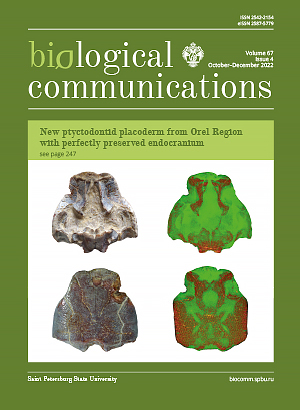Creation, working principles, development of applied and fundamental scientific activities of the Collection of Cell Cultures of Vertebrates
DOI:
https://doi.org/10.21638/spbu03.2022.406Abstract
The review presents the history of the creation of the "Collection of Cell Cultures of Vertebrate" (CCCV), which has been in operation for over 40 years. The working principles, comprising seven points and covering both the practical and scientific activities of the CCCV, are discussed. Part of the review is aimed at describing the amount of hands-on work associated with service delivery to CCCV’s users representing various institutions in the Russian Federation. The quantitative indicators presented are evidence of the active practical activity of the CCCV. Another part of the review is dedicated to the CCCV's many years of scientific work. It consists of a description of the work in 6 scientific areas throughout the lifetime of the CCCV. In conclusion, scientific and information activities of the CCCV, and participation in various State programs are indicated.
Keywords:
cell cultures, mesenchymal stem cells, matrix metalloproteinases, replicative senescence, karyotype, actin cytoskeleton
Downloads
References
Downloads
Published
How to Cite
License
Articles of Biological Communications are open access distributed under the terms of the License Agreement with Saint Petersburg State University, which permits to the authors unrestricted distribution and self-archiving free of charge.





